Layout examples
Your brochure site's pages can use multiple layouts for text, images, image galleries, and embedded videos. This page shows several examples of the available layouts.
If you're viewing this page on a smaller device like a tablet or smartphone, you may see a different layout than what's implied by the titles on this page. That's by design — all of our layouts automatically adapt to display your content in the most suitable format for mobile devices of all shapes and sizes.
2/3 + 1/3
The New Zealand kaka (Maori: kākā) (Nestor meridionalis) is a large species of parrot of the family Nestoridae found in native forests of New Zealand. Two subspecies are recognised. It is endangered and has disappeared from much of its former range.
It is a medium-sized parrot, measuring 45 cm (18 in) in length and weighing from 390 to 560 g (14 to 20 oz), with an average of 452 g (0.996 lb). It is closely related to the kea, but has darker plumage and is more arboreal. The forehead and crown are greyish white and the nape is greyish brown. The neck and abdomen are more reddish, while the wings are more brownish. Both sub-species have a strongly patterned brown/green/grey plumage with orange and scarlet flashes under the wings; color variants which show red to yellow coloration especially on the breast are sometimes found.
This group of parrots is unusual, retaining more primitive features lost in most other parrots, because it split off from the rest around 100 million years ago.
The calls include a harsh ka-aa and a whistling u-wiia.
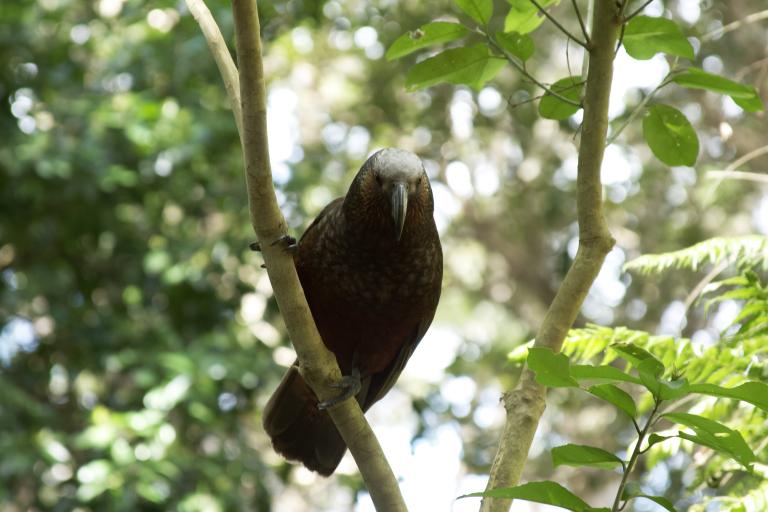
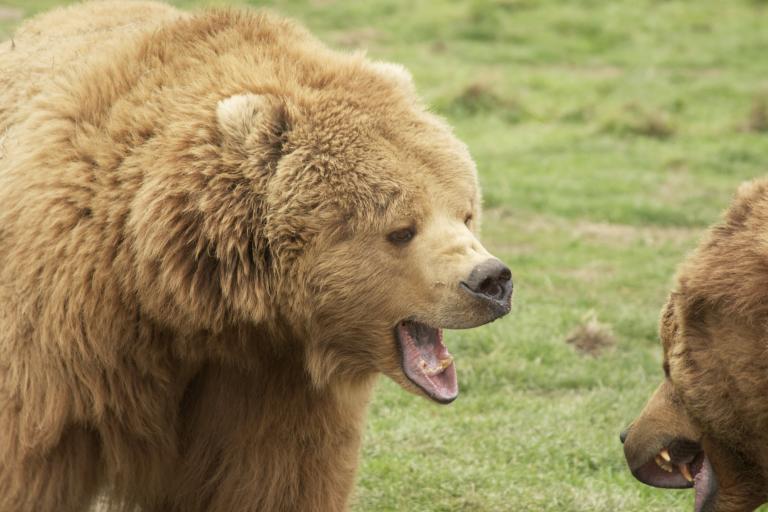
1/3 + 2/3
The grizzly bear (Ursus arctos ssp.) is a large population of the brown bear inhabiting North America. Scientists generally do not use the name grizzly bear but call it the North American brown bear.
Most adult female grizzlies weigh 130–180 kg (290–400 lb), while adult males weigh on average 180–360 kg (400–790 lb). Average total length in this subspecies is 198 cm (6.50 ft), with an average shoulder height of 102 cm (3.35 ft) and hindfoot length of 28 cm (11 in). Newborn bears may weigh less than 500 grams (1.1 lb). In the Yukon River area, mature female grizzlies can weigh as little as 100 kg (220 lb). One study found that the average weight for an inland male grizzly was around 272 kilograms (600 lb) and the average weight for a coastal male was around 408 kilograms (900 lb). For a female, these average weights would be 136 kilograms (300 lb) inland and 227 kilograms (500 lb) coastal, respectively. On the other hand, an occasional huge male grizzly has been recorded which greatly exceeds ordinary size, with weights reported up to 680 kg (1,500 lb). A large coastal male of this size may stand up to 3 metres (9.8 ft) tall on its hind legs and be up to 1.5 metres (4.9 ft) at the shoulder.
50/50
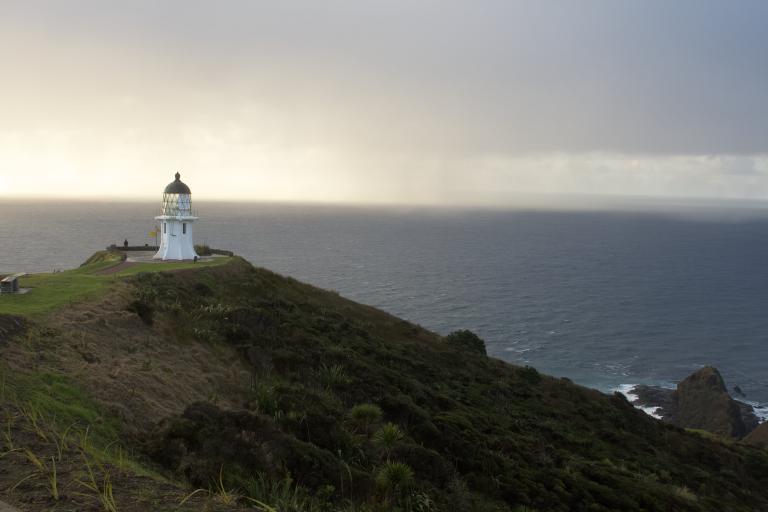
Cape Reinga
Cape Reinga / Te Rerenga Wairua (Māori) is the northwesternmost tip of the Aupouri Peninsula, at the northern end of the North Island of New Zealand (34.4288° S, 172.6805° E). Cape Reinga is more than 100 km north of the nearest small town of Kaitaia. State Highway 1 extends all the way to the cape, but until 2010 was unsealed gravel road for the last 19 km. Suitable vehicles can also travel much of the way via Ninety Mile Beach and Kauaeparaoa Stream (Te Paki Stream) stream bed.
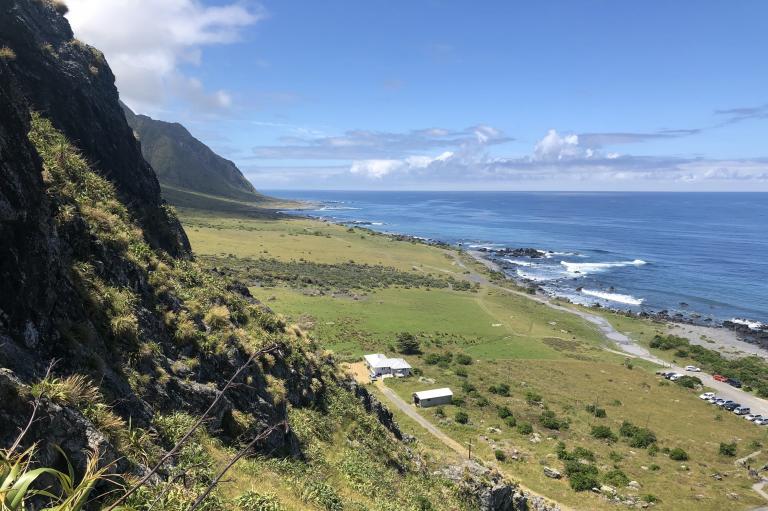
Cape Palliser
Cape Palliser is a promontory on the southern coast of New Zealand's North Island and is the southernmost point of the North Island; it is in fact considerably farther south than Nelson or Blenheim in the South Island.
It is located at the eastern end of Palliser Bay, 50 kilometres southeast of Wellington - 100 kilometres by road.
1/3 + 1/3 + 1/3

Ohope Beach (Maori: "Ōhope") is a beach in the eastern Bay of Plenty, on the northeast coast of the North Island of New Zealand, six kilometres east and over the hill from Whakatāne.
It is a popular holiday destination during the New Zealand summer, with several kilometres of safe swimming beaches. The western end of the beach is popular for surfing during the summer and Christmas period.

The Bay of Plenty (Māori: Te Moana-a-Toi) is a bight in the northern coast of New Zealand's North Island. It stretches 260 km from the Coromandel Peninsula in the west to Cape Runaway in the east. The Bay of Plenty Region is situated around this body of water, also incorporating several large islands in the bay. The bay was named by James Cook after he noticed the abundant food supplies at several Māori villages there, in stark contrast to the earlier observations he had made in Poverty Bay.
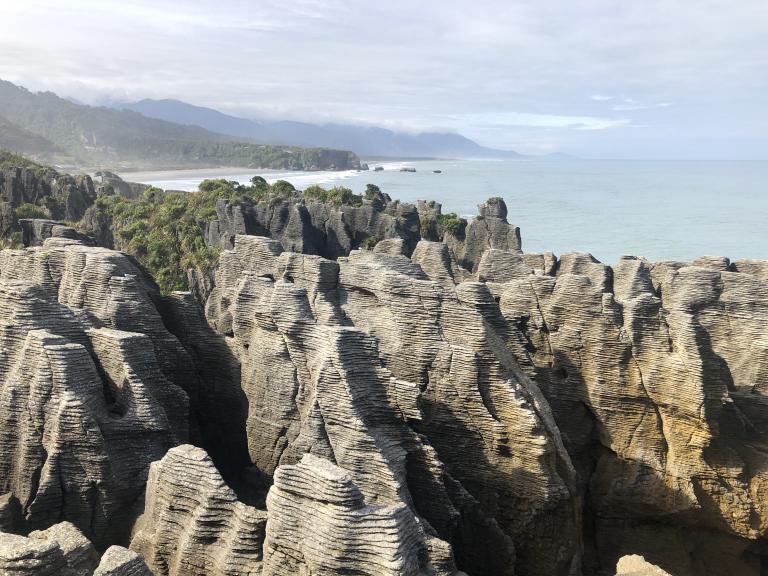
Punakaiki is a small community on the West Coast of the South Island of New Zealand, between Westport and Greymouth. The community lies on the edge of the Paparoa National Park.
The Pancake Rocks are a very popular tourist destination at Dolomite Point south of the main village. The Pancake Rocks are a heavily eroded limestone area where the sea bursts through several vertical blowholes during high tides. Together with the 'pancake'-layering of the limestone (created by immense pressure on alternating hard and soft layers of marine creatures and plant sediments), these form the main attraction of the area.
1/4 + 1/2 + 1/4
BMW S1000R
The BMW S1000R is a naked motorcycle manufactured by BMW Motorrad since 2014. It is based upon the S1000RR superbike with which it shares its engine, gearbox, frame and suspension.
The detuned inline-four engine from the S1000RR is optimized for low to mid range performance and delivers a maximum output of 118 kW (158 hp; 160 PS) at 11,000 rpm and maximum torque of 112 N⋅m (83 lbf⋅ft) at 9,250 rpm.
